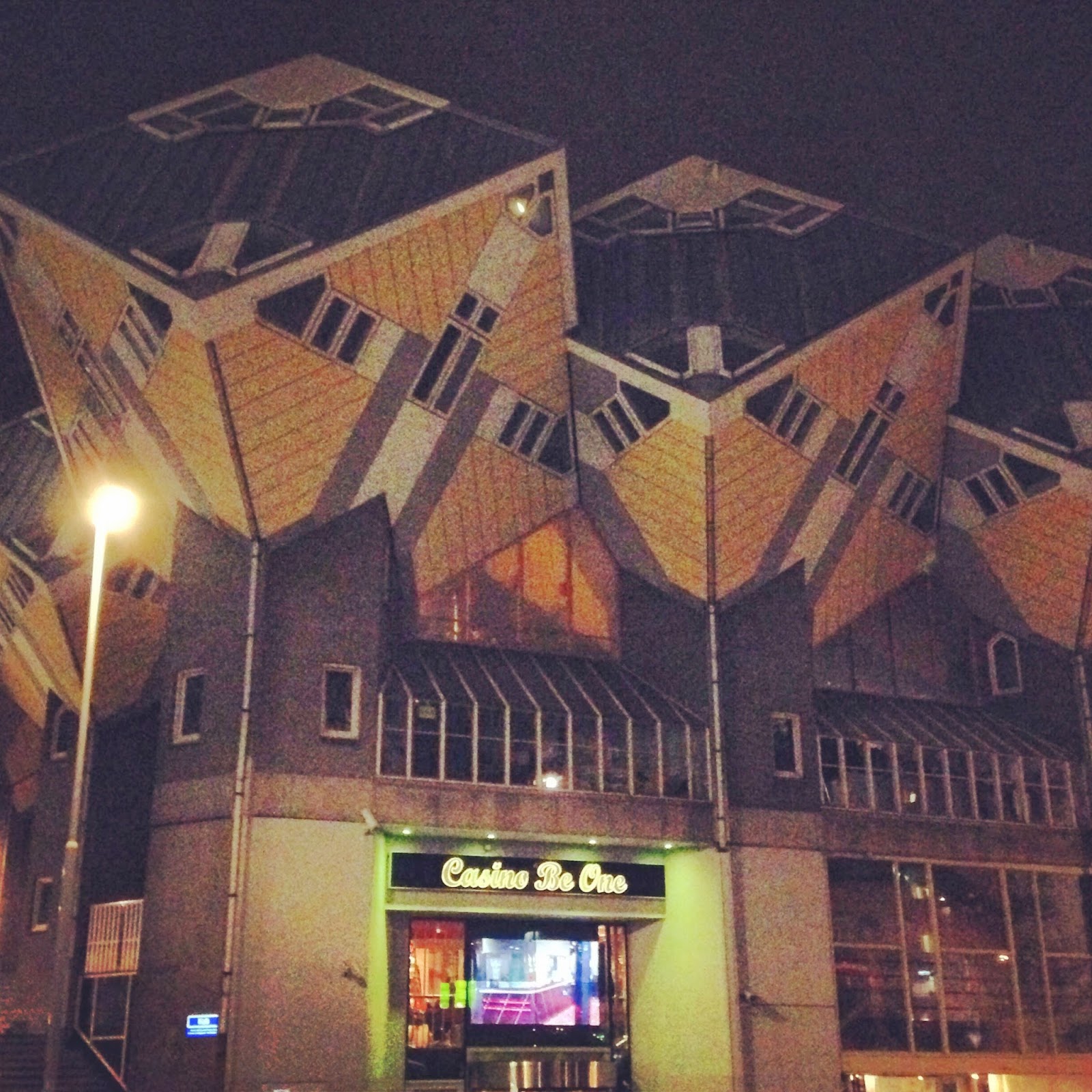On Saturday, March 15th we began our tour of Rotterdam, a vibrant international city on water in the Netherlands. I say "on water" because much like Red Hook, Rotterdam is a waterfront community. The city lies below the sea level which causes frequent floods, making water management work very necessary for the residents of Rotterdam. The traditional solution to this issue has always been the building of a levee, inclines, or dams but this has never been enough. Over the years the people of Rotterdam decided that doing the same thing over and over again and expecting the same results was insane so they began to think of ways they could do things a little differently. As our tour began I noticed all the similarities that connected this small province in The Netherlands with our little Red Hook Corner of Brooklyn.
A BRIEF HISTORY OF ROTTERDAM
 |
| Cycling in Rotterdam |
Our journey started at a local Rotterdam bike shop where we rented bikes and learned that a large amount of the population finds cycling to be an efficient and preferred mode of transportation. Our tour guide made frequent stops on the bike route so we could take in all Rotterdam had to offer.We biked past City Hall and the Main Square. Apparently architecture in the city of Rotterdam is fairly recent due to the bombings that occurred during the 2nd World War when everything was reduced to rubble and needed to be re-built. It was an extremely memorable experience, cycling past the post modern architecture and viewing some of the more romantic gardens and scenic paths.
 |
| Cubed Houses |
On one of our stops we witnessed some very interesting housing complexes being built to face the local market and personalized by local artists. Behind the complex were cubed shaped houses that only certain people (with flexible balancing organs) could live in without feeling a constant nausea! These unusual but intriguing housing options were just the beginning of the innovative developments that we would experience while here in Rotterdam.
As we continued our ride we began to approach a floating fixture that I soon learned was called 'The Floating Pavilion'.
THE FUTURE OF FLOATING CITIES
 |
| The Floating Pavilion set up for an event |
When my group and I were led inside the futuristic structure by our tour guide we were instantly impressed with how sturdy it felt. The Floating Pavilion was a project designed by a group of students studying at a Rotterdam university and backed by DeltaSync, a company specializing in floating urbanization. The student's designs became reality when they won a contest which proposed the task of constructing a floating city. The pavilion was designed and constructed in one year and when complete it gained a lot of attention. Apparently some major companies in Rotterdam were seeking new ways to promote economic development as well as innovative ideas and functions in port areas.Understandably after all that had been lost they wanted to keep their historical significance as a port city.
The Pavilion is primarily used for conferences, meetings, and small events but is built to be 100% self sustaining and if a major flood were to occur it would be the safest place to go because it moves with the tides and rises with the water. The idea was for the city to live in harmony with the water and not fight against it and thus, floating urbanization proved to be more adaptive than the traditional approach of building dikes (man made hills) and barriers. The building is made from various materials like steel, very light cushion-like glass, and concrete. It also features a dome shaped roof, is cost efficient, and can assist in re-capturing nutrients from waste water. In the future it could even be protected using ecological restoration (reefs) and encourage natural marine habitat in surrounding areas. The goal was to one day make an entire floating city that would not only be efficient but also productive. Their presentation was very impressive! I began to imagine the IKEA superstore floating on water and all the economic and social benefits such innovative ideas could bring to the community of Red Hook.
This project shows that floating structures of all varieties can be built, prove effective, and feasible.
Rotterdam was the first city to introduce floating structures in urban development and I for one was appreciative of the effort they put into protecting their city knowing the increased risk of living near the water. It became clear that with support and funding along with the collective effort of invested parties, Rotterdam would be prepared if there was another flood, storm, or both. This was the kind of innovation and protective measures that would be taken in Red Hook and anywhere else where there is a similar threat of major natural disaster if it were up to the non profit organizations like Red Hook Initiative. Unfortunately, non profits and community workers often struggle for funding and support unless there is some major eye opening natural disaster that needs to be immediately addressed.
I struggled to think of a solution to such a complex flaw in our system.
I struggled to think of a solution to such a complex flaw in our system.
Luckily...
This was only the first day of our week long tour.
Stay tuned for the second day...I am positive it's only going to get better from here!

No comments:
Post a Comment